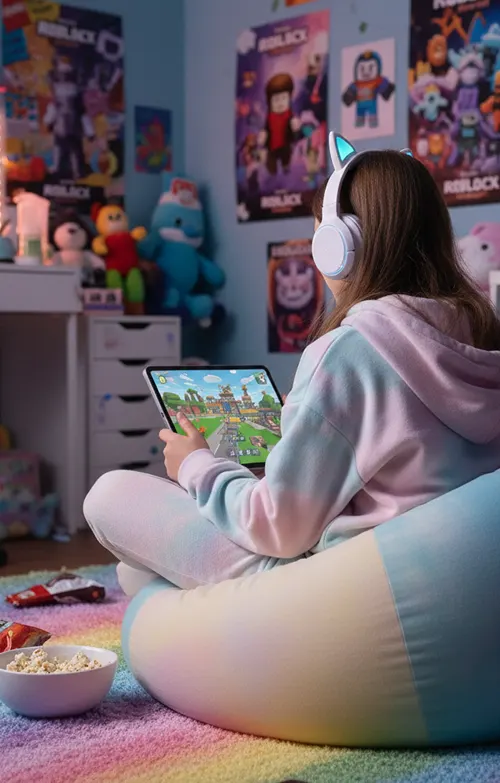Tackling the Roblox Situation: Is Child Safety in Games “Cooked?”
Roblox has long been pitched as a digital playground for creativity, collaboration, and fun. But beneath the surface, serious questions about child safety continue to build. Reports of predators grooming kids, lax moderation, and even punitive actions against safety advocates have fueled concerns that the game’s ecosystem is no longer just flawed. It may be officially ‘cooked.’
Parents, educators, and policymakers are asking: can children truly play freely in a space where the company itself seems more interested in defending its Terms and Conditions than protecting its youngest users? It looks like Roblox is going to pay a price steeper than even the $12 billion wipe off of their market cap.
A Brief History of Online Game Safety
Long before Roblox, online games were already wrestling with child safety crises.
- Runescape, launched in 2001, saw predators exploiting open chat until drastic filters were introduced.
- Club Penguin, despite its safe reputation, faced infiltration that exposed the limits of word filters and automated bans.
- Habbo Hotel made headlines in 2012 when investigations revealed widespread predatory behavior, forcing its owners to temporarily close chat features.
- Minecraft, another blockbuster with a massive youth audience, endured scandals over unmoderated third‑party servers where grooming and harassment flourished.
Even consoles weren’t immune—Xbox Live and PlayStation Network dealt with similar safety controversies in their early years.
These repeated failures attracted regulators’ attention. The US enacted COPPA to rein in data collection and communication, while Europe tightened its GDPR provisions, but enforcement remained inconsistent.
Some platforms like Neopets invested in armies of human moderators and swift reporting systems, earning parental trust. Others chose cost‑saving automation and vague assurances, quickly gaining reputations as unsafe spaces.
Soon enough, you had people using page manipulation to manipulate World of Warcraft players into giving them their data–the cat was out of the box and the gaming industry as a whole was ‘shook,’ for the lack of a better word.
Roblox, with more than 70 million daily active users, now faces the same test, but at a scale none of its predecessors encountered. The history is crowded with warnings: when safety is underfunded, predators thrive.
Roblox’s Troubling Record
Roblox’s safety failures aren’t theoretical; they’re backed by years of documented incidents. In 2018, a British mother reported that her seven‑year‑old’s Roblox character was subjected to a simulated sexual assault within minutes of logging on, a case that made international headlines and raised alarm over how easily predators could bypass filters.
Around the same time, police in multiple U.S. states began arresting adults who admitted to using Roblox chats and private servers to contact children. These weren’t isolated stings; dozens of cases have surfaced where predators exploited the privacy features of Roblox before moving conversations to apps like Discord or Snapchat.
Despite these red flags, Roblox often responded with PR statements and tweaks rather than systemic fixes. The company has touted its AI moderation and thousands of human moderators, yet predators continue to exploit loopholes. Private servers remain a weak spot, offering spaces with little oversight.
Advocacy groups and even volunteer vigilantes who highlighted these dangers, such as the creator Schlepp, often found themselves banned or threatened with legal action. Roblox defends these moves as terms‑of‑service enforcement, but critics argue it’s an attempt to muzzle those exposing uncomfortable truths.
The result is a mounting credibility gap. Parents are told the platform is safe, but repeated arrests, headline scandals, and bans on whistleblowers paint a different picture. Instead of embracing external watchdogs and prioritizing transparency, Roblox appears locked in a cycle of damage control, one that leaves children exposed while the company clings to technicalities.
Lessons from the MMO Past
There’s a pattern here: Every major MMO that attracted young audiences faced the same pattern: explosive growth, infiltration by bad actors, backlash over inadequate safety measures, and—eventually—reckoning.
Club Penguin ultimately shut down in 2017, with many pointing to the sheer difficulty of moderating at scale. Habbo Hotel went through public scandals when predators were exposed, leading to temporary shutdowns. Runescape implemented strict chat filters and community watchdog systems after early failures.
What these cases show is that trust is everything. Once parents lose faith in a platform, it rarely recovers. Kids’ worlds are supposed to be carefree, but no parent will allow their child to play where danger feels imminent. Roblox risks becoming another case study in failed online safety if it doesn’t change course. The lessons are available: real human moderators must supplement algorithms, advocates should be partners rather than adversaries, and transparency must be the rule rather than the exception.
It’s not about reinventing the wheel. It’s about learning from the platforms that faltered, and those rare ones that managed to adapt without losing user trust. If Roblox wants longevity, it needs to realize history doesn’t forgive complacency.
Recent Events and the Schlepp Controversy
The debate around Roblox safety intensified recently after the banning of Schlepp, a prominent community figure and outspoken advocate for stronger child protections.
Schlepp’s work often highlighted gaps in moderation, grooming risks, and the company’s reluctance to engage openly with watchdogs. His sudden removal from the platform sent shockwaves through parent groups and advocacy communities, with many interpreting the ban as retaliation rather than routine enforcement of rules.
This episode illustrates how Roblox handles critics: instead of leveraging community voices to improve safety, it appears to sideline them. Schlepp’s case became emblematic of the broader frustration that transparency is lacking, and that Roblox prioritizes brand protection over confronting predator infiltration.
Again, the optics are chilling—when those who warn about risks are silenced, should parents trust Roblox Parental Controls blindly? Of course not.
The controversy also spurred discussions among policymakers, with renewed calls for external oversight. Roblox’s attempt to frame Schlepp’s banning as a simple terms-of-service matter only fueled skepticism.
It underscored the urgency of stronger whistleblower protections, open dialogue between platforms and advocates, and clear accountability measures to ensure child safety cannot be swept under a corporate rug.
Conclusion
Roblox sits at a crossroads. It can either double down on Terms and Conditions as a shield or acknowledge that genuine child safety requires humility, collaboration, and transparency. History shows what happens to MMOs that ignore these truths: they fade into cautionary tales.
The public attention that rose from the controversy is a clear indication that regulators won’t wait forever, but laws alone cannot solve an online gaming crisis rooted in corporate negligence. For parents, the question is pressing: can kids play freely without fear, or is the playground already cooked? The answer depends on whether Roblox chooses to evolve—or cling to the broken patterns of its past.
About the Author:
Ryan Harris is a copywriter focused on eLearning and the digital transitions going on in the education realm. Before turning to writing full time, Ryan worked for five years as a teacher in Tulsa and then spent six years overseeing product development at many successful Edtech companies, including 2U, EPAM, and NovoEd.








